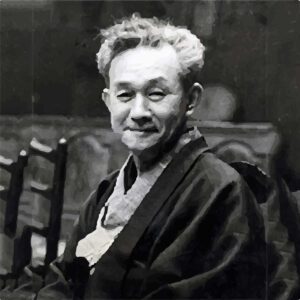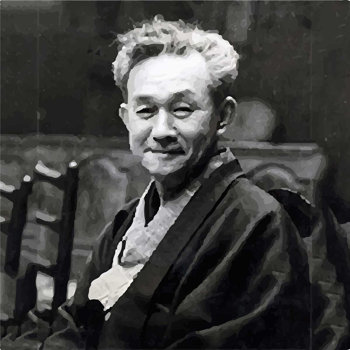
Born in Tokyo in 1889. His father, Muneyoshi, was a Rear Admiral in the Navy and a Japanese mathematician who founded the Tokyo Mathematical Company and was instrumental in establishing the Hydrographic Department of the Navy. His mother was the sister of Jigoro Kano, the founder of Kodokan Judo. Soetsu lost his father at the age of two and graduated from Gakushuin and then from the Philosophy Department of the University of Tokyo. While a student at Gakushuin High School, he published the first issue of “Shirakaba” with Mushanokoji Saneatsu, Shiga Naoya, and others. Thereafter, he became acquainted with the English potter Bernard Leach, then immersed himself in research on the English symbolic poet William Blake, and published the first study of Blake in Japan. As a result of the Great Kanto Earthquake, he moved to Kyoto. As a result of the Great Kanto Earthquake, he moved to Kyoto and became a lecturer at Doshisha University. He then began to study Mokushoku Shonin (O-Qi), and together with Shoji Hamada, Kanjiro Kawai, and others, published “The Purpose of Establishing the Japan Folk Crafts Museum” in 1926.
In the following year, he published the magazine “Dai Harmony” (The Great Harmony). The following year, he published his famous article “The Way of Crafts” in the magazine “Dai Harmony,” which became a guideline for the folk craft movement that followed, explaining that “the life of a vessel that has no purpose is lost” and that “the beauty of crafts is the beauty of service. In 1933, he returned to Tokyo and devoted himself to the expansion and spread of the folk craft movement. As one of his activities, he established the Japan Folk Crafts Museum in Komaba (Meguro-ku, Tokyo) in 1936 with the support of Magosaburo Ohara. The folk crafts collected by these artists, mainly from Japan, included many daily necessities made by the excellent craftsmen of the past, and these were exhibited at the museum. In his later years, he was deeply interested in Pure Land Buddhism and tried to find the basis of the beauty of folk art in the Amitabha’s purification in the Mahamayuri Sutra, for which he received the Cultural Merit Award in 1957. His major books on beauty include Tea and Beauty.



